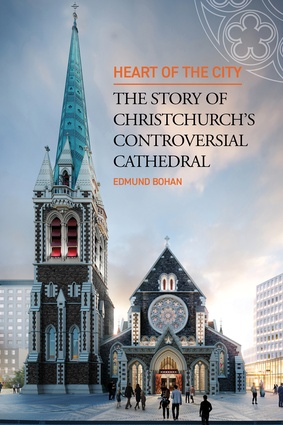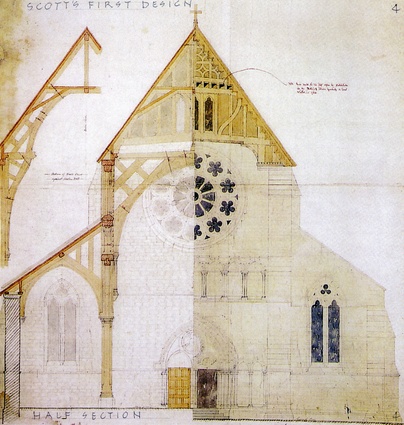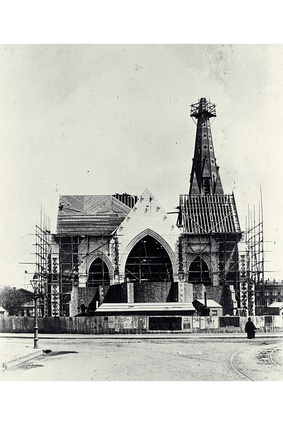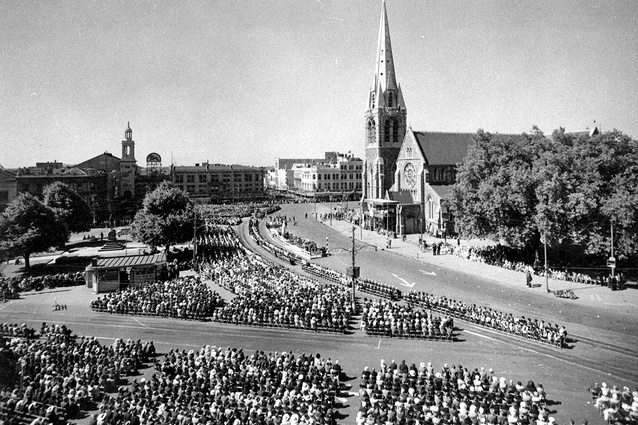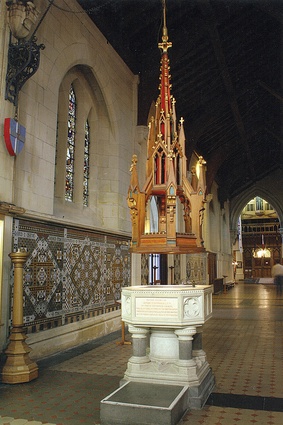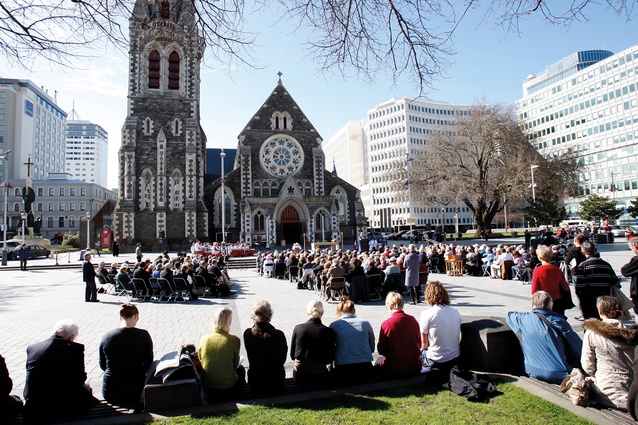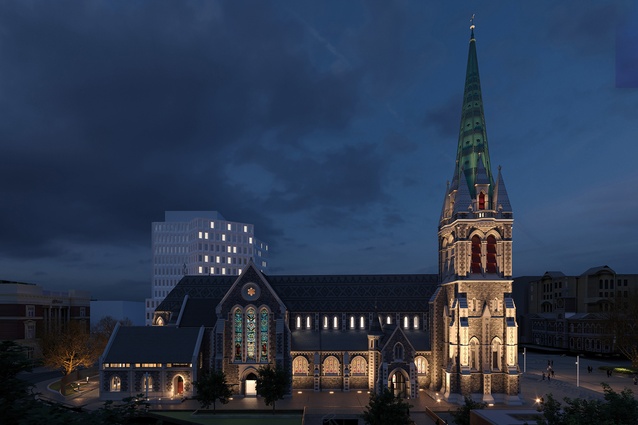Review: Heart of the City: The Story of Christchurch’s Controversial Cathedral
In Edmund Bohan's Heart of the City, Vanessa Coxhead finds an engaging read about the much-loved and controversial Christ Church Cathedral, the protagonists who created it and those who have served it, from 1848 to the present day.
It’s far from unusual for architectural projects to cause a stir. But, for a building to be controversial from its conception, across continents, to its current (and future) state is quite something.
I couldn’t think of another building in Aotearoa to rival the reputation of Christ Church Cathedral – described by Edmund Bohan as a “building that was to be a symbol, a central place for worship and a place for the wider community’s celebration or remembrance of civic, national and even international events”. It was immortalised as the city logo in 1989, solidifying the cathedral’s place as city icon. We shan’t get caught up in this debate, though; it is a point explained but not laboured in Bohan’s latest offering that is nothing short of a complex and challenging undertaking.
Bohan is an acclaimed historian but also a former international operatic and concert singer who has fond memories of his relationship with the cathedral and its acoustic personality. Through this, he grew to understand more of its historical and architectural significance. It’s this connection to the personal that makes this read so much more engaging, as he not only manages to outline the cathedral’s prominent past but presents a lively score of the remarkable people who dreamt, designed, built, worked and worshipped there. The author’s research is comprehensive; he has spoken with and acknowledged many of the most versed and valuable people regarding the cathedral but also those who value the material, political and artistic attributes of a building.
Politics. Religion. Money. Power. War. Sex. Disaster. They’re the making of a great story. Heart of the City tells the tale of the creation of the Category 1 heritage building, now emerging from the centre of a prolonged argument that some would say has caused painful divisions in the disaster-struck city. Bohan isn’t interested in providing opinion on his post-quake view of the cathedral, which has been through many twists and turns, and several courtrooms. The rational historian is clear in his intention that this story is for others to tell. Instead of the congregation of pigeons roosting in the rafters, he focuses this tale on the protagonists who created and served it from 1848 to the present day.
The book, Bible-like in size and well illustrated with historic, current and future imagery, is a joy to read. As a born-and-bred Aucklander who moved to the Garden City for a year in the mid-2000s (and stayed for eight), I was often curious about the names associated with its colonial settlement and how a cathedral ended up in the then (and still) desolate Cathedral Square. But I never learnt much about the history – there were other buildings and stories in which I was more interested.
Sure, there were tall tales told but this book delves deeply, providing an approachable account beyond the bricks and mortar. The cathedral contributes hugely to the distinctive architectural heritage to which no other city in Aotearoa could lay claim – Christchurch is a melody of Gothic revival buildings, with the country’s only stone-built Gothic revival cathedral at its centre. The architects widely acknowledged for the cathedral, Sir George Gilbert Scott and Benjamin Mountfort, feature but are not the main characters. More present names appear, too: many of those involved in supporting the cathedral’s contemporary transformations and those who have dedicated their time and expertise to the rebuild.
I am not one to pick favourites and, with a cast to rival the latest blockbuster, would quickly find myself in trouble. However, the chapters leading up to and including ‘A Symbol for a City’ are top contenders, as they detail a time of excitement, pre-war. There was a ‘completed’ building, Queen Victoria’s Golden Jubilee, the New Zealand International Exhibition staged in North Hagley Park, and the great British Antarctic expeditions of Sir Ernest Shackleton and Captain Robert Falcon Scott, all of which shone a light on Christchurch across the empire. I could not help but think about the way we showcase Aotearoa New Zealand now, the most recent at Expo 2020 Dubai, and how far we have come.
Architecture revolves around people and, to some extent, Heart of the City is the closest we will come to the walls of the cathedral talking. Yet, a great deal remains to be told of this building’s history. While the cathedral has remained a “gaunt empty ruin surrounded by a high protective screen” for the last decade, this book exposes its past and softly shines a light on what many have not been able to see – the meticulous planning for what will be one of the city’s most complex rebuilding projects. The next chapter is yet to be written…
Heart of the City: The Story of Christchurch’s Controversial Cathedral
By Edmund Bohan
Quentin Wilson Publishing, 2022

